NORSAT-1
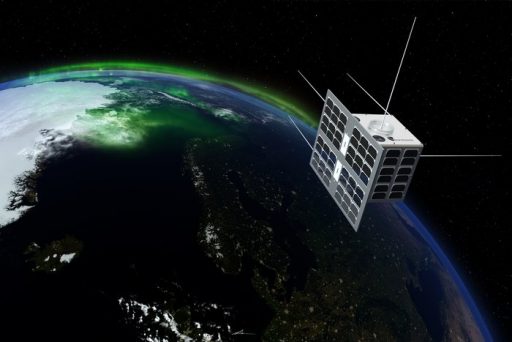
NORSAT-1 is a microsatellite mission of the Norwegian Space Center (Norsk Romsenter) using a UTIAS (University of Toronto, Institute for Aerospace Studies) satellite bus and a Norwegian-built payload dedicated to studying solar radiation, measuring space weather parameters and monitoring ship traffic via the Automatic Identification System.
The NORSAT-1 mission is developed as an affordable approach to conduct space science combined with the operational nature of ship tracking – expanding on capabilities of AISSat-1 that launched in 2010 and operated successfully for several years. Considered Norway’s first science satellite, NORSAT-1 was ordered from the University of Toronto in June 2013 and was initially expected to launch on a Soyuz rocket out of the Guiana Space Center in 2016, but launch had to be pushed due to a defective payload bracket on the launch services provider side.
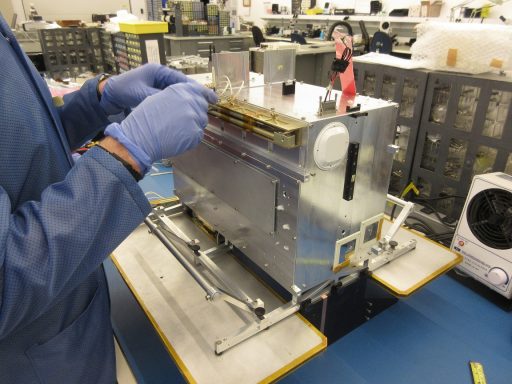
NORSAT-1 is 20 x 20 x 40 centimeters in size and weighs under 30 Kilograms, using the UTIAS Generic Satellite Bus that has flown successfully numerous times on missions supporting technology demonstration, astrophysics and Earth observation, among others. NORSAT-1 measures 92 by 50 by 32 centimeters in size when fully deployed in orbit, featuring a pair of deployable solar arrays and body-mounted panels holding a total of 96 cells for a power generation of 40W.
The Generic NanoSatellite Bus provides all structural support, power supply, thermal control, attitude determination/actuation, data handling and communications. The platform achieves a pointing accuracy of 5 degrees during all phases of flight; a precision sun sensor that is part of the payload suite provides solar vector data sufficient to point the primary instrument toward the sun with an accuracy of +/-0.4 degrees to satisfy the mission requirements.
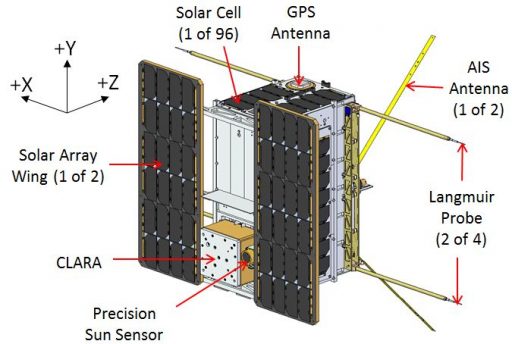
The NORSAT-1 satellite carries three payloads developed by three organizations: 1) the TSI (Total Solar Irradiation) Instrument called CLARA (Compact Lightweight Radiometer) is a Swiss-made instrument studying the variability of the sun’s emission; 2) the m-NLP (multi-Needle Langmuir Probe) developed at the University of Oslo measures space weather parameters like plasma density; and 3) the Automatic Identification System receiver provided by Kongsberg Seatex, Norway.
CLARA, the Compact Lightweight Absolute Radiometer, is a small scientific instrument for the measurement of the total solar irradiance within the scope of a micro satellite mission. The instrument represents the primary payload of NORSAT-1 and its operation takes priority over the other two payloads.
CLARA weighs 2.63 Kilograms, is 11.4 by 14.1 by 15.5 centimeters in size and requires precise solar pointing with an accuracy of +/-0.5 degrees for its three measurement cavities to be able to collect data.
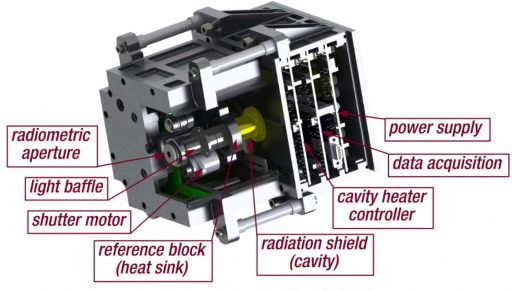
The measurement of Total Solar Irradiance (TSI) is of interest to the scientific community in a variety of areas. Extraction of ultraviolet emissions is possible for a long-term study of UV variations and their influence on space weather phenomena. The measurement cadence of TSI will also allow for a unique look at the helioseismology of the solar atmosphere to study the acoustic energy carried into the solar atmosphere by high frequency sound waves.
TSI is also of interest in climate research as the Total Solar Irradiance has to be known with high precision to examine the total input of energy into the Earth System. CLARA aims to extend a long-term record of TSI measurements as continuous monitoring is needed when looking at long-term climate implications. TSI is considered one of 50 Essential Climate Variables by the World Meteorological Organization.
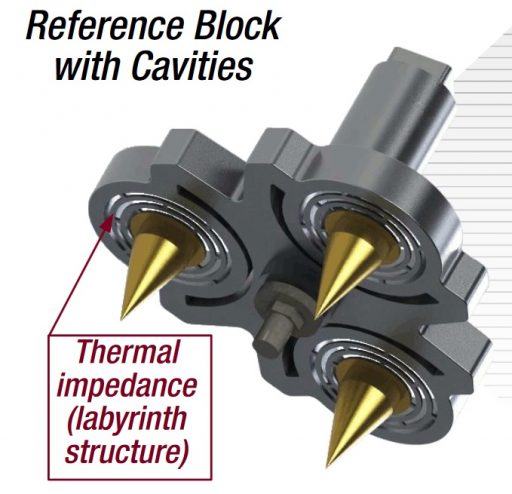
The CLARA instrument comprises three principal components – the Sensor Unit, a Back Section with the instrument electronics and a Precision Sun Sensor. The Sensor Unit uses an aluminum enclosure wrapped in Multilayer Insulation and connected to the Back Section via fur large titanium studs, decoupling the highly sensitive sensors from any thermal disturbances to comply with a thermal stability requirement of 1 Kelvin. The sun sensor is optically aligned with the Sensor Unit but held in place with a bracket extending from the less thermally sensitive Back Section.
CLARA comprises three identical cavity radiometers – consisting of an instrument tube with a front window through which radiation enters the instrument and is directed onto an absorber. Internal heaters keep the cavities at constant temperatures, measured by sensors in the material and heater currents are recorded to determine the incident energy since the currents required to keep the elements at constant temperature drop with increased heat flux.
The sensor cavities are made of gold-plated thin-walled 10µm solar cones with electrical heater foils on the inside walls; the defining apertures for the radiometric channels use a 85% tungsten carbide and 15% cobalt material. The apertures are 5 millimeters in diameter and the sensor cavities sit 55mm behind the apertures.
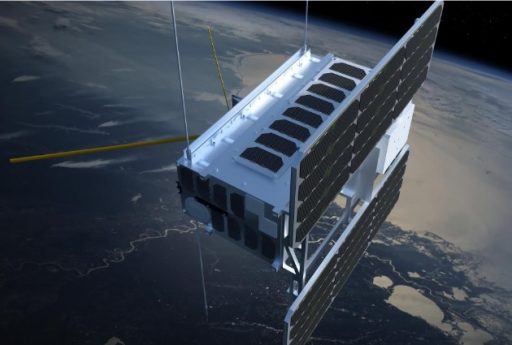
As an active cavity Electrical Substitution Radiometer, CLARA uses one reference cavity which is always shaded and heated electrically with a constant power of 35mW. The active cavity is alternating between shaded and exposed with a periodically activating shutter. The instrument control circuit adjusts the heater power to the active cavity to maintain the heat flux from the cavity to the reference block to equal the heat flux from the shaded reference cavity to the reference block. The difference of heater power in the open and closed states is equal to the total solar input.
The third cavity of the instrument is available as a backup channel and remains shaded for most of the time and only opens for occasional cross checks to monitor for potential degradation of the active cavity. Typically, CLARA obtains measurements at a cadence of 30 seconds.
m-NLP, the multi-needle Langmuir Probe, is a secondary payload on the NORSAT-1 mission to measure plasma properties in the Low Earth Orbit regime at a higher resolution than other Langmuir experiments. The multi-Needle Langmuir Probe (m-NLP) from the University of Oslo can provide measurements of the absolute electron density at a spatial resolution of around one meter, allowing detailed maps of plasma turbulence phenomena to be created on a global scale.
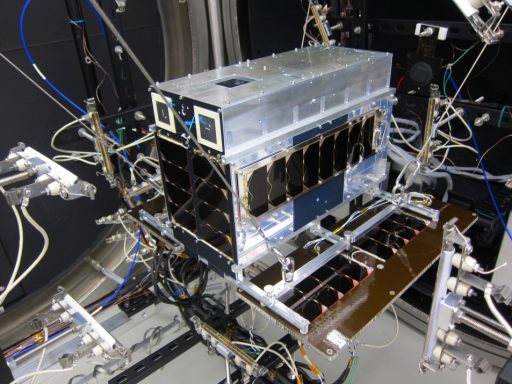
Langmuir probes can determine electron temperature, electron densities and the electric potential of a plasma.
Langmuir Probes have a constant or time-varying electric potential between them to allow the determination of physical plasma properties by measuring currents and potentials in the electrode system. A bias voltage is applied to the probe and the resulting current that is measured is proportional to plasma charge density.
The m-NLP experiment employs four electrodes that operate at constant voltages – avoiding a sweeping voltage design that is used by many other instruments, but comes at the cost of spatial resolution because it takes time for the probes to step through their voltage sweep during which the satellite moves a considerable distance on its orbital trek.
The m-NLP instrument uses four booms, holding the probes in front of the satellite’s shock front, each with a different bias potential relative to the satellite platform potential. The current is collected individually from all four needle probes which allows measurements to be completed at very high time resolution and also eliminates the need for actively controlling the spacecraft potential. Currents of 1 nanoampere to 2 microamperes can be measured by the instrument at a sampling rate of up to 7kHz, creating a spatial resolution of 1.1 meters.
The four booms are facilitated in two cassettes using a spring-loaded mechanism to deploy the two 37-centimeter long booms and extend their separation distance to 40 centimeters with a locking mechanism holding the booms in place after deployment.
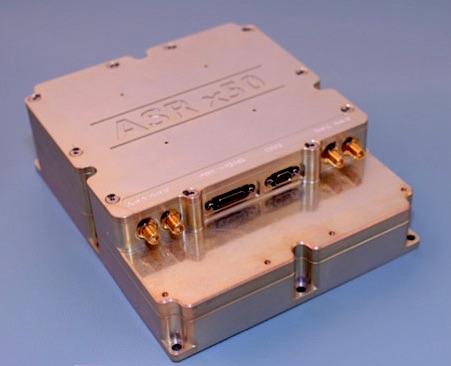
The Automatic Identification System payload hosted by NORSAT-1 comprises a 14 x 16.8 x 5.4 centimeter receiver and processing unit and two tape-spring antennas that pick up the VHF messages from sea-going vessels.
The Automatic Identification System is used by sea vessels that send and receive VHF messages containing identification, position, course and speed information to allow the monitoring of vessel movements and collision avoidance as well as alerting in the event of sudden speed changes.
These signals can be transmitted from ship-to-ship and ship-to-shore to allow the monitoring of a local area, but deploying space-based AIS terminals allows a broad coverage and data relay to ground stations for monitoring of large sea areas. However, due to the large footprint of satellites, overlapping and signal collisions become a problem, especially for frequented traffic routes, requiring a steady improvement in reception technology to separate the different signals.
